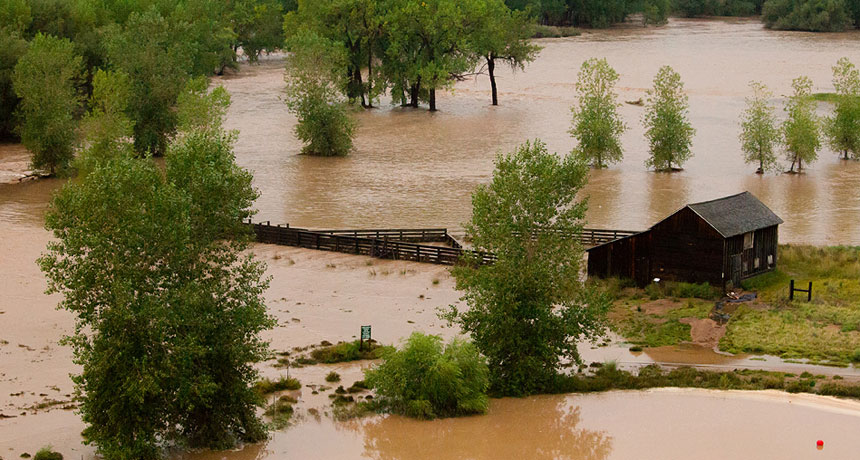Colorado deluge produced flood of drug-resistance genes
Pristine waterways were inundated with antibiotics in 2013

FLOATING AROUND Colorado’s 2013 floodwaters (flooding in the city of Longmont shown) spread antibiotics and microbial drug-resistance genes to new places, including pristine headwaters of the South Platte River Basin.
Bryce Bradford/Flickr (CC BY-NC-SA 2.0)







